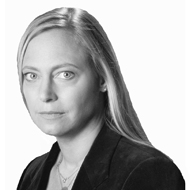Why I’ll Still Own Lots of Stocks When I’m Old
Money is not a client of any investment adviser featured on this page. The information provided on this page is for educational purposes only and is not intended as investment advice. Money does not offer advisory services.

When EBRI recently released its annual 401(K) database report, most observers were heartened that balances and growth rates were up for a large cross-section of retirement plan participants. But there was one curious finding: equity holdings had dropped between 2007 and 2013, especially among older participants. By the end of 2013, 24% of people in their 50s and 60s had no investments in equities at all, compared with 18% in 2007. Meanwhile, the percentage of 60-year-olds with more than 80% of their 401k in equities dropped from 33% in 2007 to 25% in 2013.
There are several possible explanations for this drop. The first is that these survey participants witnessed a massive drawdown in their portfolios in 2008 and, not wishing to repeat the experience, reduced their equity holdings. EBRI didn’t make much of the shift out of stocks, noting that “the decline in the ownership of equities among older participants is consistent with standard financial advice emphasizing decreasing investment risk as individuals approach retirement.”
This advice is still standard—but it shouldn’t be. With nonexistent yields and interest rates near zero, fixed income and money market instruments cannot possibly keep up with inflation. (See “Why I Won’t Own Bonds in My Retirement Portfolio.") Investing for growth, through stocks, during the second part of your life is the only way to keep up with inflation. And yet financial advisers are still being trained to recommend that their midlife clients go easy on equities.
I recently took the General Securities Representative (Series 7) exam, which is required for brokers and places great emphasis on how to determine the suitability of a particular investment for a particular customer. One of the guidelines is that a customer’s equity exposure should equal 100 minus the customer’s age, with the remainder in bonds, so that a 50-year old should be 50% stocks and 50% bonds, and a 70-year old should be 30% in stocks, etc. When I encountered this question on my practice exams, I had to toss reason aside and make recommendations that I don’t think are wise.
It’s not as though a high allocation to stocks in middle age is such a revolutionary idea. None other than Charles Schwab has been advocating this approach for years in his book, You’re Fifty—Now What? “Thanks to longer life spans and better health, we face the very real possibility of outliving our money, which means that investing strategies for the second half of life need to change from what they used to be,” Schwab wrote. Schwab recommends that anywhere from 60% to 95% of your portfolio should be in stocks at age 50, and that the equity portion of your portfolio should never fall below 50% for the rest of your life.
Schwab made these recommendations back in 2001. Since then, market conditions and changing demographics have made them all the more relevant, and yet the conventional wisdom has not caught up with the times. Meanwhile, more and more people are investing in target date funds, which are constructed to reduce equity as you get older, because they are usually the default option in automatic 401K enrollment plans. Reducing risk is the rationale, but someday I hope people will also understand that when it comes to retirement planning, you should never be more conservative than you absolutely have to be.
Konigsberg is the author of The Truth About Grief, a contributor to the anthology Money Changes Everything, and a director at Arden Asset Management. The views expressed are solely her own.
